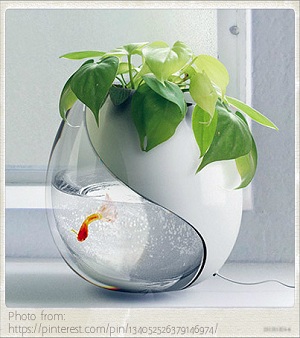Many, if not most aquarium corals contain within their tissue the symbiotic algae called zooxanthellae that require light to perform photosynthesis that the corals utilize for food. The challenge for the aquatic hobbyist is to provide enough light to allow photosynthesis to maintain a thriving population of corals. Some corals like mushroom and polyp corals require very little light to thrive. Conversely, large-polyp or stony corals such as brain bubble coral, elegance coral, cup coral, torch coral, and trumpet coral require moderate amounts of light, and polyp stony corals require higher, more intense lighting. Of the various types, most popular marine reef aquarium or saltwater aquarium lighting systems comes from: Metal Halide, Very High Output (VHO), Compact Fluorescent, LED and T5 High Output aquarium lighting systems. Although they were once widely used, many aquatic hobbyists have abandoned T12 and T8 Fluorescent lighting systems due to their poor intensity, and mercury vapor due to its production of a limited light spectrum and instead are utilizing LED aquarium lighting due to its wide use of applications from Freshwater to Saltwater Fish Aquariums.Recent advances in lighting technology have also made available a completely new technology for aquarium lighting: light emitting diodes or LEDs. Although LED aquarium lighting systems themselves are not new, the technology has only recently been adapted to produce systems with qualities that allow them to be considered viable alternatives to gas and filament based aquarium lighting systems.
The newness of the technology does cause them to be relatively expensive, but these aquarium lighting systems bring several advantages over traditional lighting. Although aquarium LED lighting systems initial cost is much higher, they tend to be economical in the long run because they consume less power and have far longer life spans than other systems and MarinerReefAquatics.com highly recommends LED lighting for any aquarium application including marine reef tanks. Moreover, LED aquarium lighting systems are made of hundreds of very small bulbs, a microcomputer can control their output can be controlled to simulate daybreak and sunset. Some systems also have the ability to simulate moonlight, shimmering sunlight and the phases of the moon, as well as vary the color temperature of the light produced. Visit our online discount aquarium supplies store at http://marinereefaquatics.com today for a wide variety of LED Aquarium Lighting products, all at discounted prices!
Visit http://marinereefaquatics.com/index.php?main_page=page&id=7&zenid=42602793876e83948d65843da60e7d0f for this a copy of this article on our website.
AQUARIUM LIGHTING FAQS
What type of lighting do you recommend for a Reef tank?
Corals, anemones, etc. require much lighting. The best light to supplement a healthy marine environment is Metal Halides and Compact Fluorescent (or T12 Fluorescent tubes). This combination of lights will also allow you to create a dawn and dusk effect to your tank, and will most naturally simulate natural sun.
What type of lighting do you recommend for a Saltwater tank?
Metal Halides are not necessary, but they would make a better crisp appearance in the tank along with a rippling effect to the water. The Blue Compact Fluorescent bulbs in the ABS systems & retrofits, and the Super Actinic Blue in the Fluorescent Deluxe Aluminum Lighting systems & retrofits bring out the fluorescent vibrant colors of your fish. LED Aquarium Lighting System are best overall lighting for algae control and power efficiency.
Which bulb is better: Compact Fluorescent or (T12) Fluorescent?
The Compact Fluorescents are better because they are MUCH BRIGHTER than the VHO's and they hold their spectrum longer. The Compact Fluorescent bulb is a new technology, and you only have to replace them every 14-16 months while the VHO's need to be replaced every 4-6 months. LEDs will only need to be replaced after approx. 50,000 hours of use.
What type of lighting do you recommend for a Freshwater tank (Plants)?
No Actinic Blue lights are necessary. Use only LEDs, or Compact Fluorescent. Do not go any higher than a 10K bulb.
Also for more information on Aquarium Filtration & Aquarium Filter Media visit: http://marinereefaquatics.com/index.php?main_page=page&id=6

 Introduction To Of Some Lower Cholesterol Foodstuffs
Cholesterol is a fat-like element contained in the physique
Introduction To Of Some Lower Cholesterol Foodstuffs
Cholesterol is a fat-like element contained in the physique
 The Simplest Way To Lessen Your High Cholesterol By Natural Means
High-cholesterol is a major variable inside the countrywide
The Simplest Way To Lessen Your High Cholesterol By Natural Means
High-cholesterol is a major variable inside the countrywide
 Starting Up An Aquaponics Set Up From See The Easy Way
Planting seeds in your aquaponics system can be a lot simpl
Starting Up An Aquaponics Set Up From See The Easy Way
Planting seeds in your aquaponics system can be a lot simpl